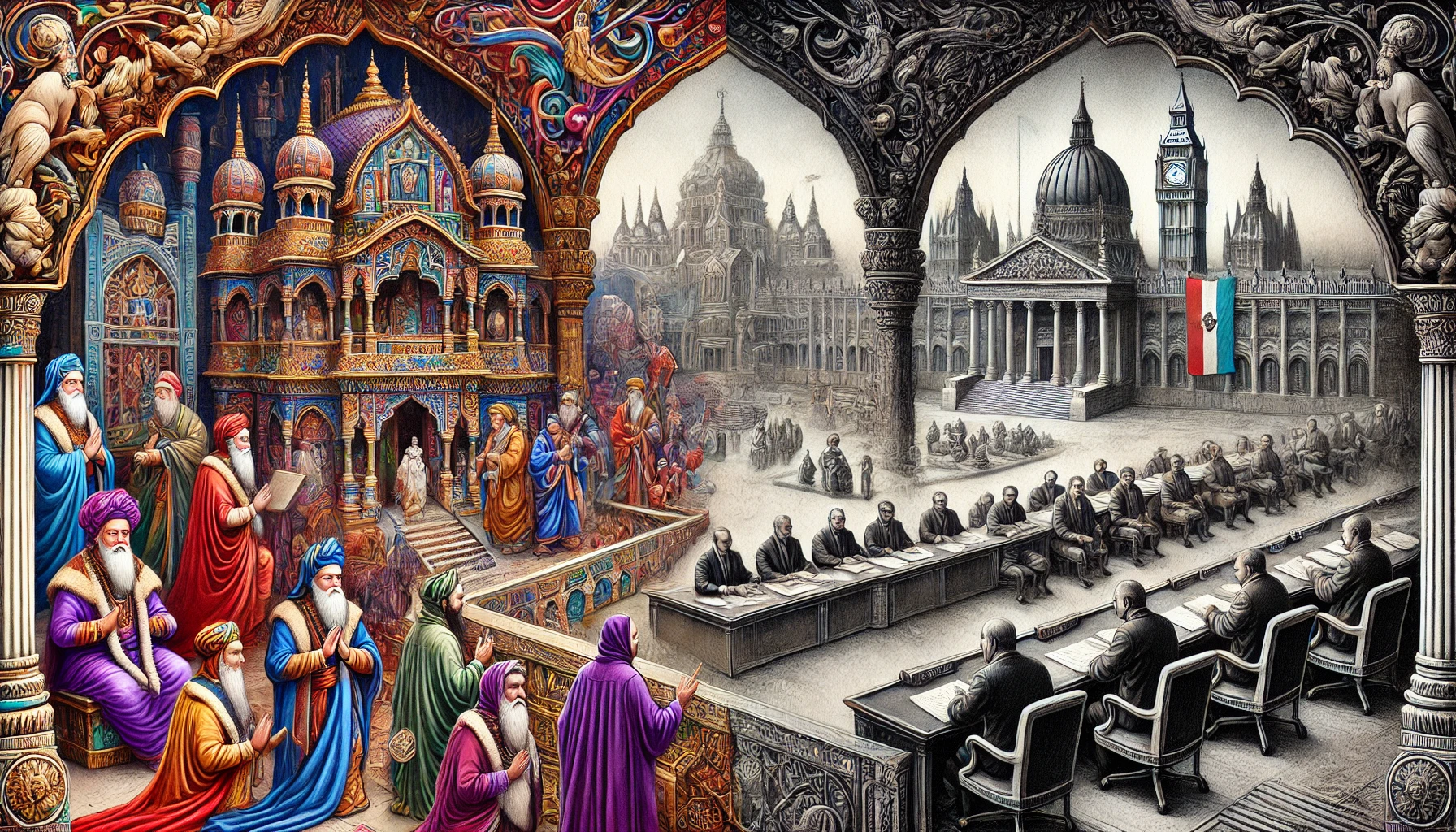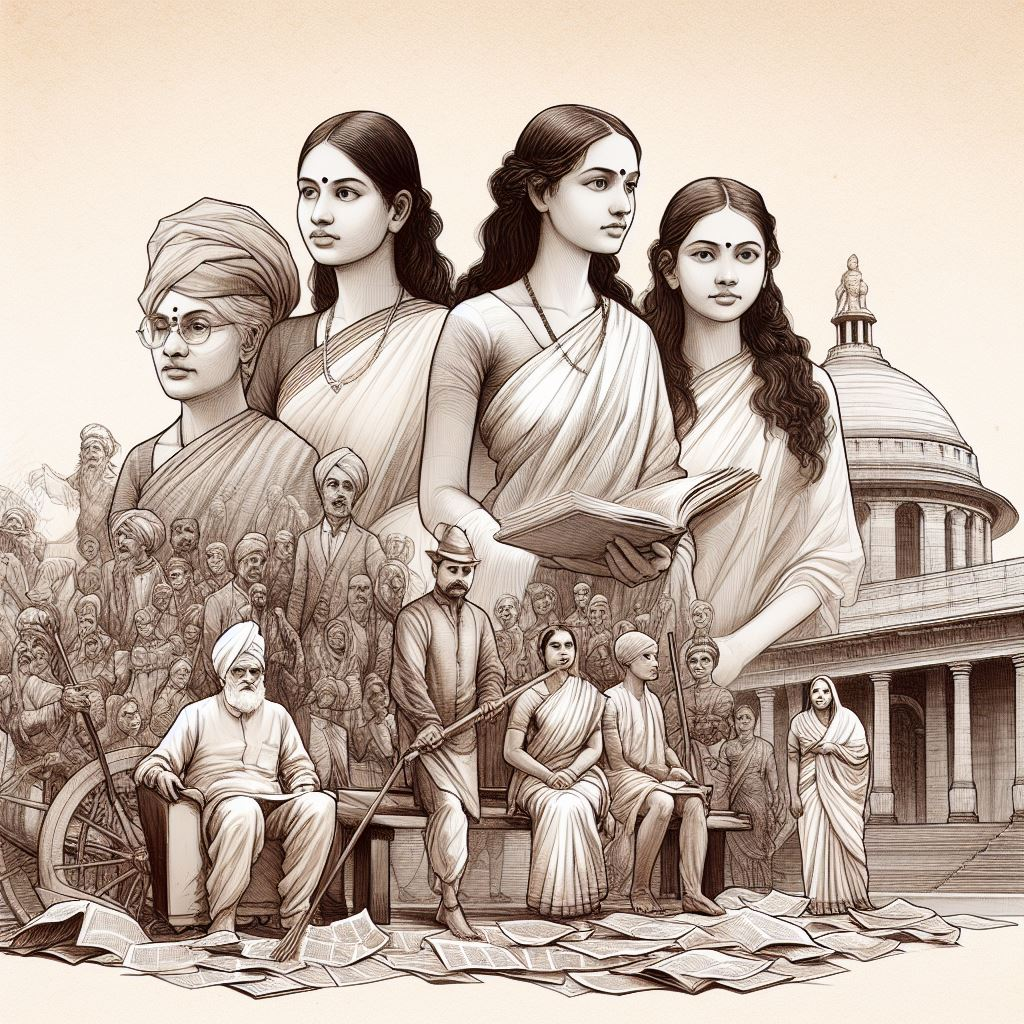Arvind
“The polar ends of any substance are indeed unified by the very substance that they strive to be polar ends of”
“Secularism” as a terminology has been marketed largely as a Western notion which grants- “Ideological communal liberty”. Nevertheless, the Indian understanding of Secularism has a sui generis nature which extends to both its “Positive” & “Negative” versions. Secularism when viewed as a principle of separating religion from politics and governance can be categorized into two types:
- Positive secularism – This approach is more proactive, with the state taking an active role in ensuring religious harmony and respect for all religions. It allows the state to support each religion equally and draws inspiration from religious philosophies. India’s secularism is considered an example of positive secularism.
- Negative secularism – This type of secularism emphasizes the complete separation of religion from the state. The state neither recognizes nor intervenes in religious affairs, and does not promote any philosophy related to religion. France’s secularism is considered an example of negative secularism.
The article discusses the shift in nature of secularism in Indian constitution which was tilted towards negative secularism initially, and now as positive secularism after the 42nd Constitutional Amendment Act, 1976.

The recent judgment of the Supreme court in the case of – “Anjum Kadari & Another Vs. Union of India & Others” clubbed with “Managers Assoc. Madaris Arabiya UP Vs. Union of India” which upheld the UP Board of Madarsa Education Act, 2004 on the certain rationales one of it being – “Positive Secularism” understanding of the Temporal evolution of the concept of Secularism in the Indian context becomes only current and crucial thereof.
The evolution of the Concept of Secularism has to be viewed in the context of 3- crucial Time-points.
- Pre- 1976 (The Unamended Preamble)
- 1976 – 42nd Constitutional Amendment Act,1976
- Post 1976 – (The Amended Preamble)
Pre – 1976 (The Unamended Preamble) – “Negative Secularism ”
“Non- intervention in the Processes through which a Religion or its’ likes come into existence”
The unamended version of the Preamble to the Indian Constitution offers the insight into the “Negative Secularism” Nature of the Indian Republic evident from the following rationale: –
- Non-employment of the explicit word – “Secular”: The conscious non-employment of the word secular despite the word having been in the dictionaries as early as 1290 A.D. which translates as the – “Indifference to Religious or spiritual matters.”
Ergo, a question is begged here: -“Where do you locate the concept of secularism in the Indian constitution in this phase”?
The same is located in the words- “Liberty of Thought, Expression, Belief , faith and Worship”.
- Liberty of – “Thought, Expression, Belief, Faith & Worship”: The careful analysis of these words giving due regard to the order in which they have been arranged points to the revelation that the Indian constitution intended to protect the very “process of any religious, spiritual or other similar processes formation”.
Process of Formation of the Above
A Religion or the likes of the same begins with a “Thought” which expressed over-time transforms into “Belief” and belief transcends to Faith and ultimately leads to Worship. Ergo, the end result of this process is what goes to become a Religion.
By, providing liberty id est, “freedom in very process beginning from “thought” and ending with “worship” is freed and at every step there is no restriction. Thus, without explicitly employing word “religion” or “secular” the Indian constitution strived to provide for “liberty in the very process” and the “liberty in the process” implied – “absence of state intervention” in the same thus is indicative of, the presence of negative secularism in the Indian constitution.
Thought → Belief → Faith → Worship = Religion
The Indian Constitution grants liberty in this process which is also protective of every ideology a Person may acquire as the same is inevitable consequence of this very process.
It is for this reason that even an atheist is granted the freedom to be an atheist as the atheist became an atheist by virtue of this process and so far as the question of worship goes the atheist worships his very idea of atheism.
1976 – 42nd Constitutional Amendment Act, 1976
“The Transition point in the shift from the Negative to the Positive”
The 42nd Constitutional Amendment Act, 1976 marked the transition in the evolution of the understandings of secularism in the Indian constitution as it marked the point of shift.
It led to the explicit addition of the word –“secular” in the preamble to the Indian constitution, stating that the nature of Indian state would be secular.
Post 1976 – (The Amended Preamble) – “Positive Secularism”
“Equal intervention (by means of equal promotion) is equivalent to No- Intervention”
The addition of the word “secular” to the preamble led to the development of – “Indian positive secularism” which came to be popularly expressed as – “sarva dharma sambhava” and “Equal promotion (An intervention) of all religions without any inequity is No-intervention at all” as it does not result in disproportionality in the religions or cause an improper hierarchy among them. The rationale being an equal addition to all things indeed results in no in equality between them but rather heightened equality among them.
This can be best illustrated by the – “Subsidies provided by the govt. for Religious Yatras of the religion like, “Haj subsidy” and “Kanwar Yatras”.
Conclusion
Ergo, the Indian concept of Secularism is unique both in its Negative and Positive connotations as it is characterized by the concept of “Intervention”. In, Negative Secularism there is no intervention of the State at all whatsoever for promotion or otherwise (nil religious policies and schemes). And In, Positive Secularism there is intervention but that intervention should be Equal and it should not cause any disproportionality in the religions and the intervention as to be such that the mark of such intervention should leave the religions in the state of heightened equality. The same may be illustrated by means of the following illustration:
Let’s say there are 3 bottles of honey (represting 3 religions say, Hinduism, Islam, Christianity) each carrying 300 ml of honey in them. Negative would be to not intervene at all and let the 300 ml remain 300 in the bottles. The State intervenes and adds an amount of 50ml in all the 3 bottles (positive) now, this addition is in equal amount for all the 3 bottles and is of such nature as to cause no disproportionality among the bottles and there is still equality among the bottles and it is now in fact, “an Hightened Equality” (300 to 350 ml), thus, resulting in virtually “no intervention” because of equality in it.
However, in positive secularism both powerful institutions (State and Religion) can influence each other frequently and may often yield unpleasant result. A slight misuse of one by the other could disturb the whole order of the society as witnessed in the history of struggle between the State and Church in the West.
The views and opinions expressed by the author in this article are his personal opinions and do not represent the views of PureSociology. You can contact the author/s at [email protected]. The details of the author:
Mr. Arvind is a Law student (BALLB 5th Semester) at Chandigarh University (CU), Punjab (India).


